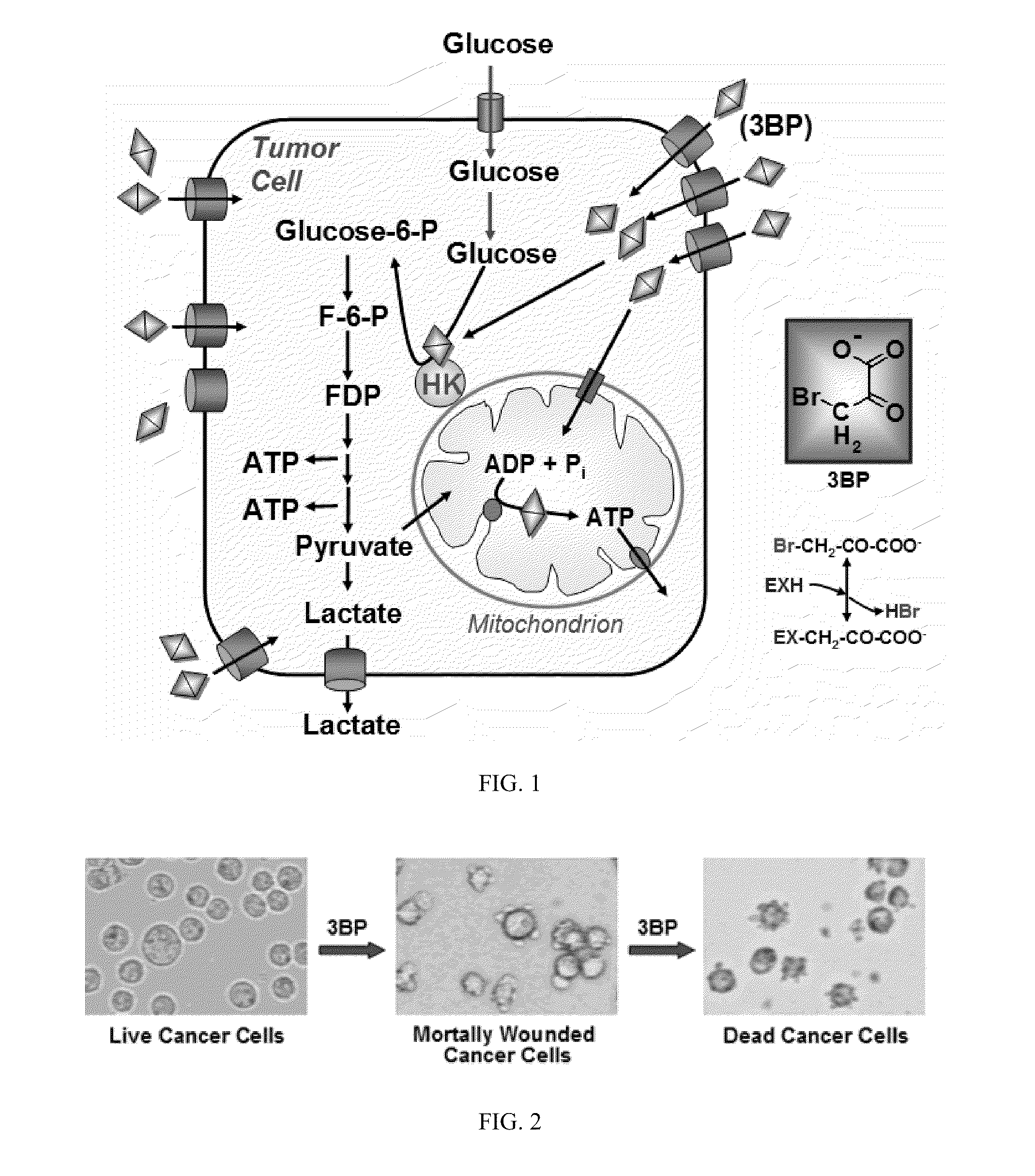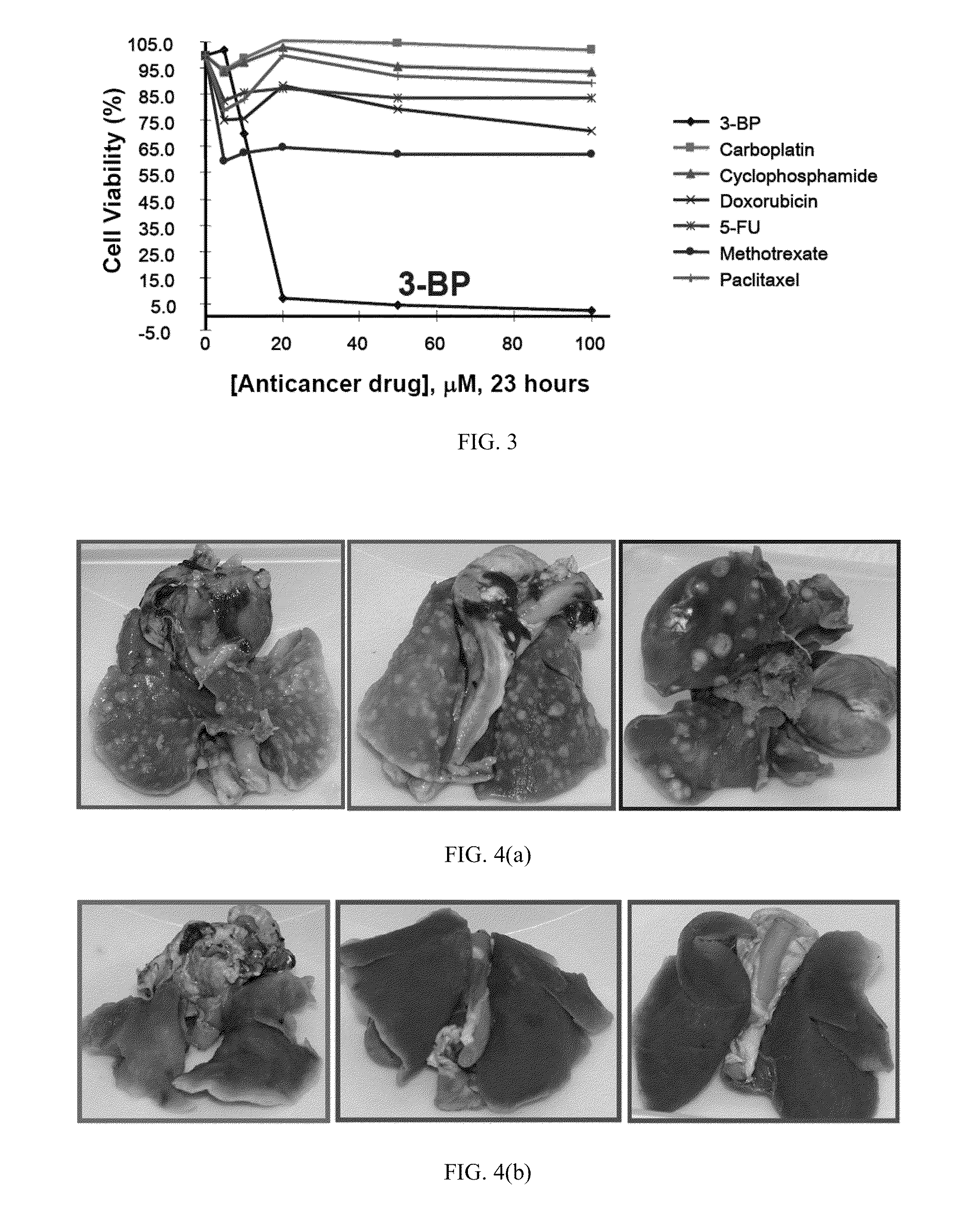Composition and methods for the treatment of cancer
a cancer and cancer technology, applied in the field of cancer chemotherapy, can solve the problems of malignant cells remaining difficult to treat, many healthy cells invariably destroyed, illness and even death in some patients, etc., and achieve the effect of avoiding or avoiding
- Summary
- Abstract
- Description
- Claims
- Application Information
AI Technical Summary
Benefits of technology
Problems solved by technology
Method used
Image
Examples
example
Example 1
Rat Hepatocellular Carcinoma Study
Hepatocellular carcinoma cells were treated with various anti-cancer agents including 3-bromoacetate. FIG. 3 shows a graph of cancer cell viability as a function of μM amounts of the anti-cancer agents over a 23 hour period. As shown in FIG. 3, 3-bromopyruvate provided little cell viability (approx. 5%) with as little as 20 μM used. In fact, 3-bromopyruvate provided 10 times more efficiency as compared to the closest anti-cancer agent, methotrexate, measured in terms of cell viability 5% vs 55%.
example 2
Lung Cancer Treated with 3-Bromopyruvate
Table 1 provides results of cell proliferation for human lung cancer cells treated with various known anti-cancer agents compared to 3-bromopyruvate.
TABLE 1Anticancer AgentInhibition of Cellat 50 μM, for 24 hrsProliferation, %None (control)03-Bromopyruvate92.5Carboplatin4.5Cyclophosphamide0Doxorubicin39.65-Fluorouracil17.8Methotrexate28Paclitaxel0
As can be seen from Table 1, for lung cancer cells, 3-bromopyruvate was more than twice as effective as the closest comparative known anti-cancer agent. As such, the present anti-cancer compositions can provide at least a 90% inhibition of cancer cell proliferation.
example 3
FIG. 4(a) shows pictures of dissected lungs of a rabbits having metastatic tumors without the present treatment, while FIG. 4(b) shows lungs of a rabbits demonstrating no metastatic lung cancer after treatment using 3-bromoacetate via IP port delivery. As can be seen from FIGS. 4(a) and 4(b), the present anti-cancer composition was able to prevent metastatic lung tumors.
PUM
| Property | Measurement | Unit |
|---|---|---|
| Time | aaaaa | aaaaa |
| Time | aaaaa | aaaaa |
| Time | aaaaa | aaaaa |
Abstract
Description
Claims
Application Information
 Login to View More
Login to View More - R&D
- Intellectual Property
- Life Sciences
- Materials
- Tech Scout
- Unparalleled Data Quality
- Higher Quality Content
- 60% Fewer Hallucinations
Browse by: Latest US Patents, China's latest patents, Technical Efficacy Thesaurus, Application Domain, Technology Topic, Popular Technical Reports.
© 2025 PatSnap. All rights reserved.Legal|Privacy policy|Modern Slavery Act Transparency Statement|Sitemap|About US| Contact US: help@patsnap.com



